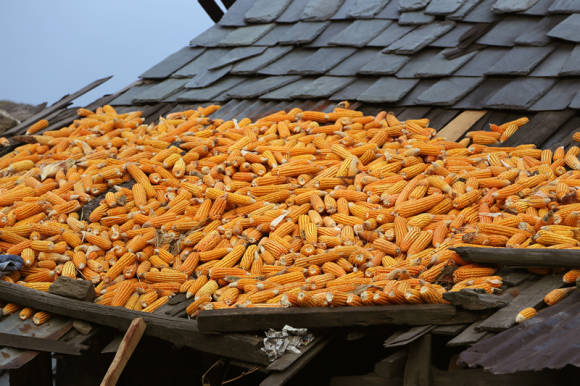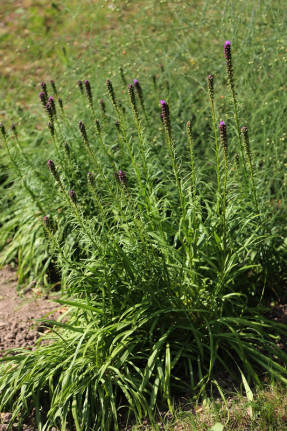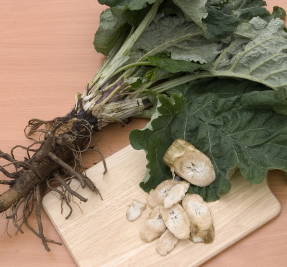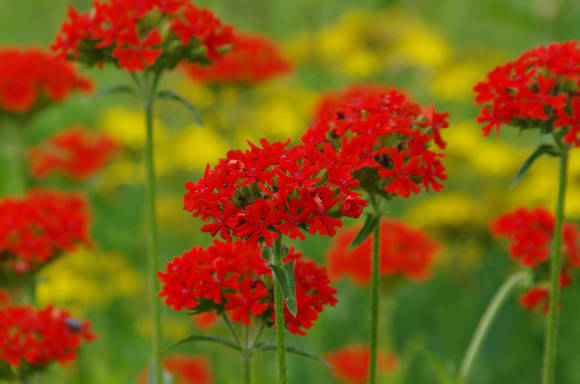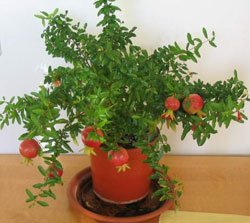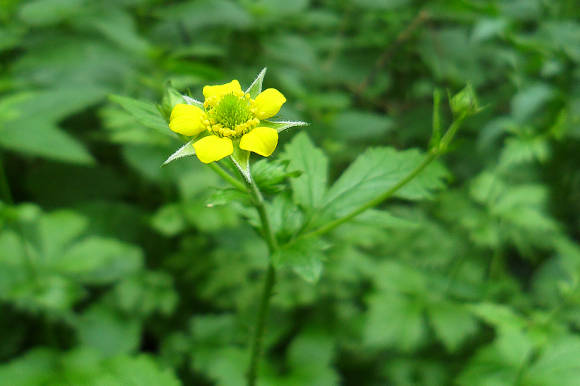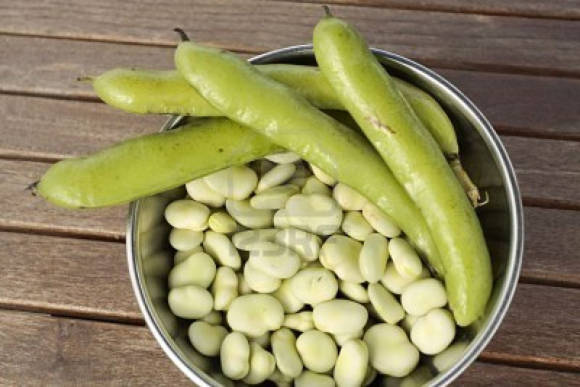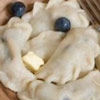Efimenko Alexander Alexandrovich,
practitioner in interior landscaping and plant care
The ending. The beginning is in the article Indoor plant lighting.

Taking into account the needs of plants in a certain spectral composition of light is necessary with the correct selection of artificial lighting sources.
Lamps are usually marked with color temperature (CCT) markings. The 2500K marking indicates that this is a lamp with more red rays in the spectrum than a 7200K lamp. On the first, they sometimes write - a lamp of a warm color, on the second - a cold one. The table shows how the lamps are divided according to this indicator.
Another parameter of the lamp is color rendering index (CRI - color rendering index). This parameter shows how close the colors of the illuminated objects are to the true colors. This value ranges from zero to one hundred. The higher this indicator, the more “natural” and more attractive the plant seems. Marking / 735 - means a lamp with a CRI value = 70-75, CCT = 3500K - a warm white lamp; / 960 - lamp with CRI = 90, CCT = 6000K - fluorescent lamp.
Color temperature of different types of lamps
CCT (K) | Lamp | Colour |
2000 | Low pressure sodium lamp (used for street lighting), CRI <10 | Orange - sunrise-sunset |
2500 | Uncoated high pressure sodium lamp (HPS), CRI = 20-25 | Yellow |
3000-3500 | Incandescent lamp, CRI = 100, CCT = 3000K Fluorescent lamp warm-white, CRI = 70-80 Incandescent halogen lamp, CRI = 100, CCT = 3500K | White |
4000-4500 | Cold white fluorescent lamp, CRI = 70-90 Metal halide lamp, CRI = 70 | Cold white |
5000 | Coated mercury lamp, CRI = 30-50 | Light blue - midday sky |
6000-6500 | Daylight fluorescent lamp, CRI = 70-90 Metal halide lamp (metal-halide, DRI), CRI = 70 Mercury lamp (DRL) CRI = 15 | Sky on a cloudy day |
In phytolamps, the spectrum is optimized for plants. At the same power, a special lamp gives more "useful" light for plants than a conventional one. There are no green and yellow rays. Almost all the light is absorbed by the plant, its leaves do not reflect anything and appear black. From the point of view of energy saving, this is good. And that's not bad for plants. But the decorative effect is lost. If you install a more powerful lamp with a high color rendering index, then all the necessary components will be in its spectrum, and the situation will be corrected.
Characteristics of different types of lamps
Briefly about the advantages and disadvantages of different types of lamps in terms of their use as indoor plant lighting.
- Incandescent lamps give light with spectral characteristics close to sunlight. But more than 90% of all consumed energy goes into heat, so the leaves of plants around them dry out. When water drops hit them, they burst.
 |  |

- Halogen light sources - these are incandescent lamps, in the cylinder of which vapors of halogens (bromine or iodine) are added. Their light has a satisfactory spectral composition, approaching the sun, almost the same as that of conventional incandescent lamps. They require additional protection from dirt, accidental touch and contact with fusible materials, moisture. They give off a lot of heat. Good for selectively illuminating a subject.
- Fluorescent lamps (daylight, tube). A gas-discharge light source in which an electrical discharge in mercury vapor creates ultraviolet radiation, which is converted into visible light using a phosphor - for example, a mixture of calcium halophosphate with other elements. They have a satisfactory spectral composition. More economical than incandescent bulbs. They transfer dirt and water droplets when spraying plants. Requires special fastening during installation.
 |  |
- Phytolamps, usually the same gas-discharge fluorescent tubes, give light that is almost completely absorbed by the green leaf.Plants do not look attractive in this light, but they grow quite well. Quite economical.
- Compact fluorescent lamps often referred to as energy efficient. As a rule, these are lamps with a standard base (E27). They also have a satisfactory spectral composition. Low amount of heat generated. Ability to tolerate dripping moisture. They are mounted in standard lighting structures.
 |  |
- DRI - high pressure metal halide lamps have a high luminous efficacy and, from the point of view of the human eye, better spectral characteristics than HPS lamps. Like other types of discharge lamps, metal halide lamps require special discharge initiation devices (ballasts), sometimes called ballasts. Short-term interruptions in power supply cause extinguishing of MGL. Severe vibration, which is especially dangerous for long-arc lamps operating in a horizontal position, can lead to the same outcome. Dangerous for MGL is acoustic resonance, which occurs when the lamp is supplied with alternating current of a certain frequency (in the acoustic range).
- HPS lamps (high pressure sodium lamps), are used with a ballast (ballast) and have the highest luminous efficacy among all gas-discharge lamps. The first complicates installation, the second reduces power consumption in terms of watts per lux. They are used in industrial plant growing, giving light with a spectral composition close to the sun.
 |  |
- Light-emitting diode lamps (LED)... Their main advantages are high luminous efficiency (efficiency - 0.68) and relative durability. But the luminous flux of LED lamps is still low. Their spectral characteristics are rarely suitable for plants. LED lamps of warm white light (FaOm-8W-ww) have Ra = 83. Their weak point is the color rendering of red (R9) and blue (R12) colors. Warm white LED lamps outperform warm white compact fluorescent lamps in terms of yellow-green (R3), yellow (R10), blue (R12) and dark green (R14) colors. But it is these colors that are not consumed by plants. There are LED lamps with "color corrected", where color rendering is improved and the light of a red LED with λmax = 625 nm is added to a blue LED with a yellow conversion phosphor. Perhaps the future belongs to them.
In our opinion, today energy-saving lamps, which provide convenient installation and give good spectral characteristics in terms of plant life and decorativeness, will be optimal for indoor lighting of plants. When lighting winter gardens, it is better to use HPS lamps, which are also available with a standard E27 base. Their ballast devices (ballasts) can be placed at a sufficient distance from the light source and well decorated.
Day length
An important characteristic of the light regime is its daily and seasonal dynamics. Day length (photoperiod) varies throughout the year. In temperate latitudes, the shortest day is 8 hours, and the longest is more than 16 hours. The location of the windows and the amount of light
Most plants need sunlight for planting flower buds, flowering and ripening fruits, but there are some that need darkness.
According to the degree of relation to the light regime, plants are distinguished long day, which can bloom and bear fruit with the onset of a long light period and a short night, i.e. from early spring to early autumn. Radish is a well-known example of such a plant in mid-latitudes. Please note that fruiting is not the formation of a root crop, but the formation of seeds. Of the indoor plants, the most famous are: hydrangea, gloxinia, saintpaulia, calceolaria, cineraria.
Plants short day (zygocactus, Kalanchoe, azalea, poinsettia, etc.), in order to bloom, you need 8-10 hour daylight hours.Long daylight hours cause increased leaf development in them, promotes photosynthesis, and the accumulation of vegetative mass. Plants, not demanding on the length of the day, bloom with both long and short daylight hours (roses, ever-flowering begonia, abutilon). There are plants that bloom only after alternating long and short dayswhen short winter days give way to long spring days (large-flowered pelargonium) or require reverse alternation, i.e. bloom only in winter (camellia, cyclamen).
You can adjust the length of the day with different types of timers.
Sometimes, when decorating an interior, the rules of aesthetics require a certain placement of plants, which does not at all correspond to the requirements for lighting. In these cases, plant species are selected that can withstand the absence of light for a longer time, or after some time some plants are replaced by others. It may be preferable to use artificial or stabilized plants under these circumstances. But that is another story.
Photo by authors
